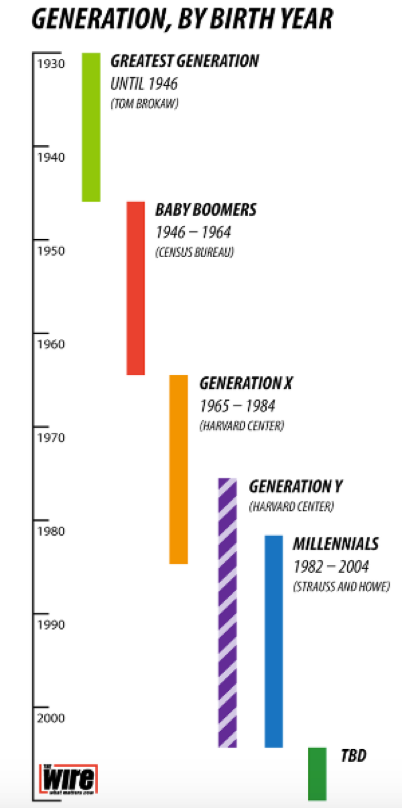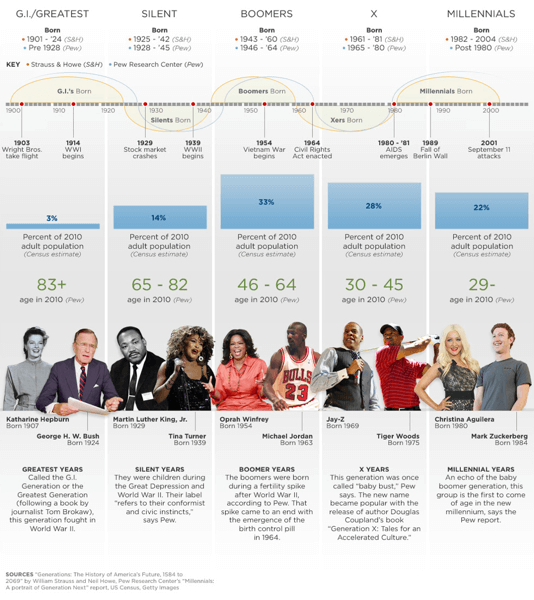I grew up with antenna TV (before cable), watched movies on VHS, recorded songs from the radio on blank audio cassettes and used the library’s card catalog and encyclopedias to research my school papers.
I also witnessed the personal computing revolution, learning the primitive technology of years ago and then watching it morph into what it’s become today. Nowadays, I stream the internet on my Smart TV and automate my life with the latest apps for convenience.
But guess what? I still don’t identify myself as a Millennial. Why? Because I still prefer paperback books, turn-key auto ignition, and having an intelligent conversation over the phone. #sorrynotsorry
I was born and raised in the Reagan Era and came of age during the Clinton & Bush (x2) administrations, but I definitely came to realize how different I was from the majority of Millennials as a group.
It was early 2012, and Whitney Houston, one of the most talented vocalists of all time, had just passed away when a twenty-something co-worker of mine asked me who her husband, Bobby Brown, was. It was hard to keep a straight face, but then I realized that she was barely walking when I was a preteen trying my best to perfect the Roger Rabbit dance move.
Some researchers at the Harvard Center for Population and Development Studies originally included those born in the early 1980s as part of Generation X. According to The Wire, it became obvious that these young kids didn’t really fit with the cool Generation X aesthetic, so Generation Y, also known as the “Echo Boomers,” was whipped up as a temporary Band-Aid until there was enough of them to make a new generation designation as seen below.

Pew Research Center, and more notably Strauss and Howe, then dubbed what was left of Generation Y as the overwhelmingly broad Millennial Generation. CNN then published an interesting graphic of American generations through the years that captured the various findings and set the new generational standards referenced by most marketers.

This Millennials group includes almost 80 million people in the US alone. But because their perspectives, influencers, and behaviors differ widely (as noted in my own experiences above), it’s important for retailers to understand how these differences could affect their marketing efforts.
For example, someone born in 1981 likely didn’t have their first cell phone until college, while someone born in 1998 could have realistically received their first cell phone in grade school and been introduced to texting as the norm for most telephone communications. Just some food for thought for when deciding who to target with your next SMS campaign.
So how do you effectively market to such a diverse and multifaceted group? Here are three helpful steps:
- Use Your Preference Center. Include the basic fields, such as name, gender, and birthdate (including year), but also gather information about their lifestyles, such as hobbies and interests. Offer them choices about how frequently they’d like to receive your emails, and consider offering a time-out option.
- Don’t Treat Them as Just One Segment. Once you’ve gathered their birthdate, you might categorize them by their birth year, such as “Late Gen X” for 1976-1980, “Gen Y” for 1981- 1990 and “Gen Z” for 1991- 2004.
- Don’t Force-Feed Your Messaging. Get the idea of push marketing out of your heads. It is no longer effective, especially with this group collectively. Use the information you’ve gained in your preference center to your advantage.
A few more useful tips
Less is More. Make a statement with your message, but keep it brief and to the point. You are competing in a very saturated market.
Be Genuine. Don’t be sneaky or throw surprises at them. Be upfront and stand behind your word.
Be Cool. Stay current with pop culture and all media outlets. Spin your new content off of what’s popular on social media sites. Subscribe to local blogs for inspiration.
Get Them Involved. Partner with them. Make them your brand ambassadors. Invite them to be part of your world. Encourage word-of-mouth advertising or try crowdfunding where applicable.
I’d love to hear more perspectives on this topic, particularly from you Millennials out there. If you have any thoughts on these classifications or have found success with marketing to this new generation of consumers, please share your experience below.




